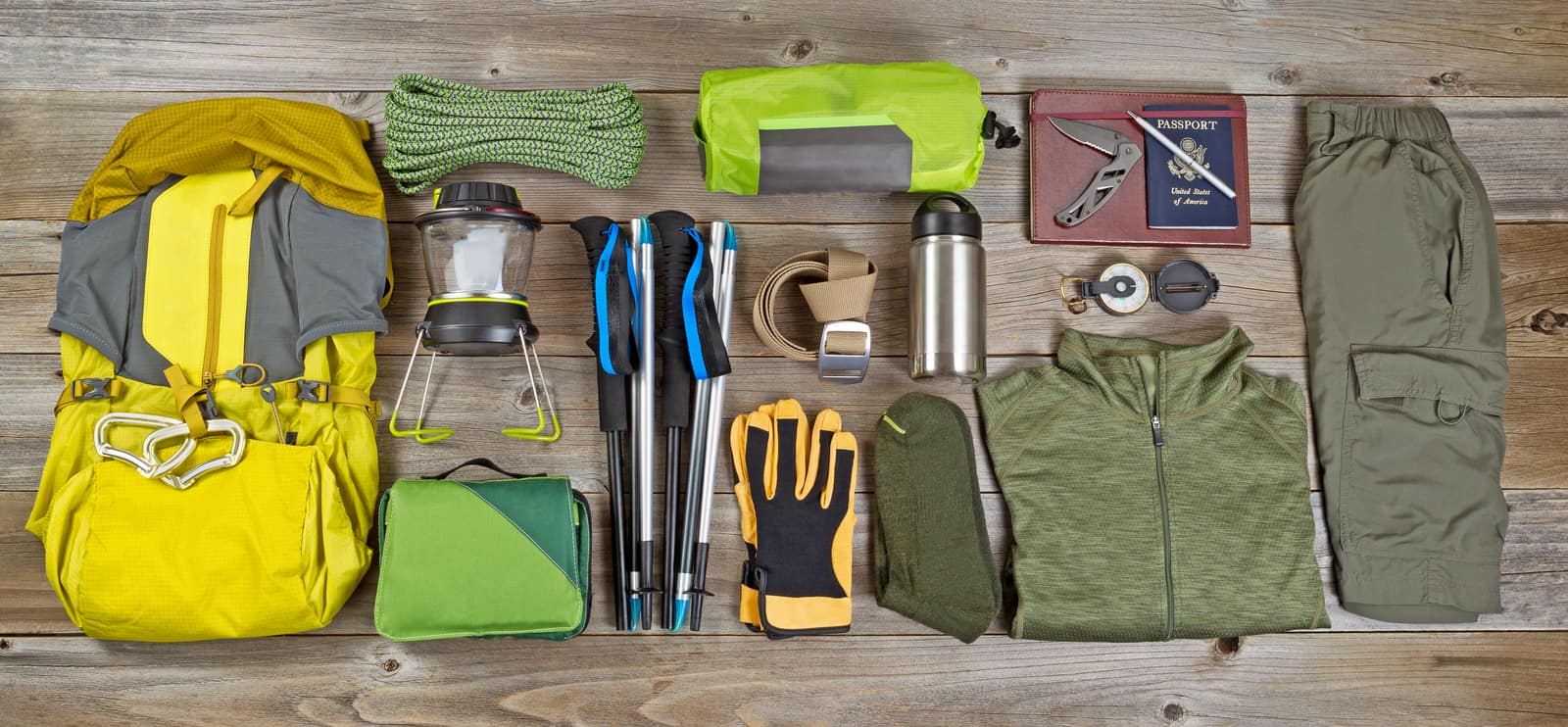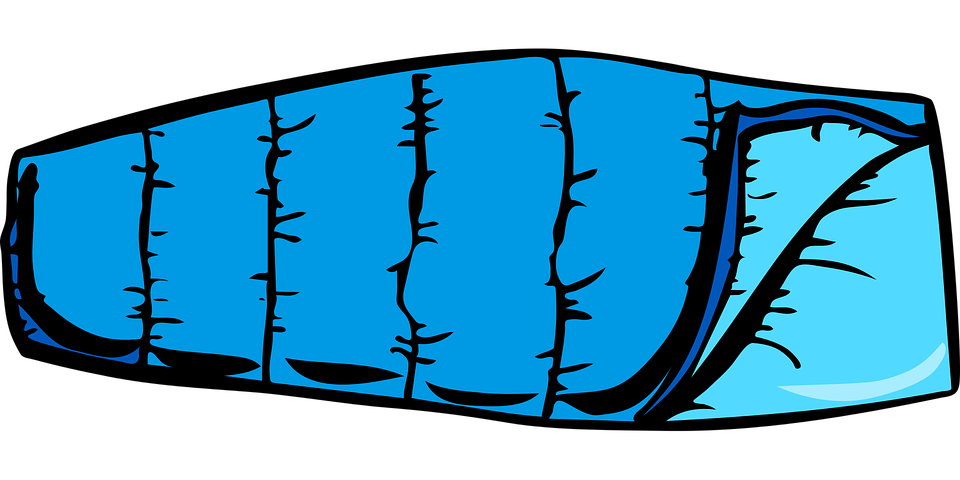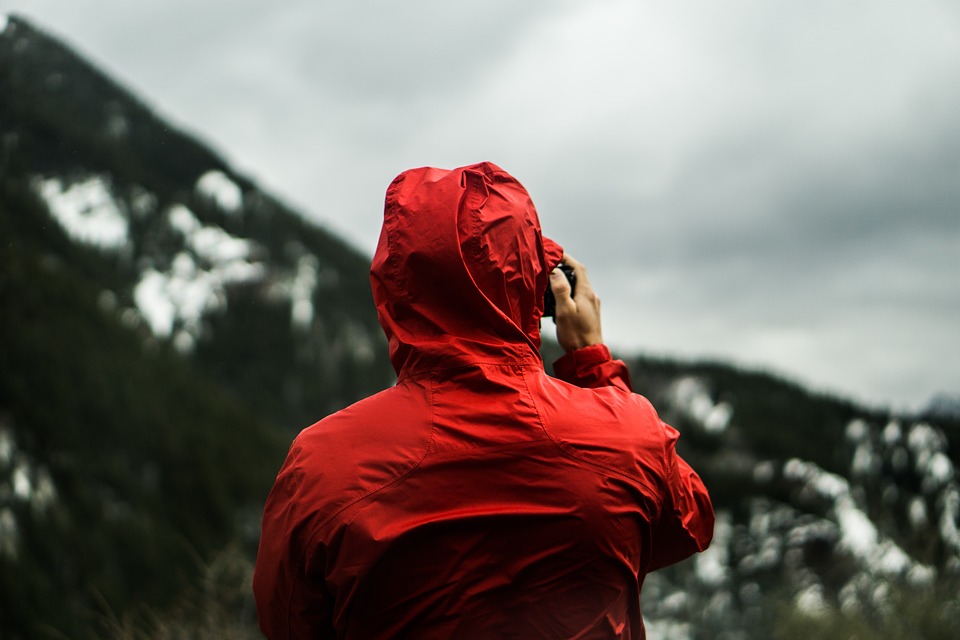It is best if your Camino de Santiago packing list only includes the essentials. This will make your journey easier by keeping the weight in your backpack as low as possible.
The Camino is likely to become one of your fondest memories, but you must be well-prepared to experience it fully. But remember you can buy anything in Spain that you forget.
You might be asking yourself what well-prepared actually means. The aim is to pack everything you need and still have your backpack weigh less than ten percent of your body weight. Here is a very handy Camino de Santiago packing list:
-
-
- Fleece jacket
- Ultra-comfortable trail runners or hiking shoes – Use boots in the winter
- Medium-sized backpack with hip straps (30-45L will work) – like this on Amazon or check out this post on the best backpacks for the Camino
- Summer sleeping bag and/or sleeping bag liner, also known as a sleeping sack
- Trekking poles (optional, but they help you handle the weight of your backpack)
- Socks made of high-quality wool
- Underwear
- 2-3 light hiking shirts or t-shirts (one long-sleeved, one short-sleeved)
- Either a lightweight rain jacket or poncho
- 2-3 pants options (hiking pants, hiking leggings, hiking shorts, anything goes as long as you’re comfortable in it)
- Sandals, flip-flops or Crocs
- A quick-dry microfiber towel
- Laundry soap
- Flashlight (a flashlight app on your phone also does the job)
- Swiss army knife
- Earplugs and eye mask (especially if you’re a light sleeper) – I love these
- A small first aid kit with the following: anti-inflammatory gel, painkillers, rubbing alcohol, Compeed band-aids, any medication you use, and a bottle of probiotics (to help avoid any stomach issues)
- Anti-blister stick
- A sewing kit (this is useful not only for patching up clothes but for dealing with blisters as well, make sure to sterilize the needle with some rubbing alcohol first)
- Toiletries: shampoo, toothpaste, toothbrush, body wash, deodorant, I can live without conditioner while on the Camino
- Hat and sunglasses
- Sunscreen (I cannot stress this enough, you will definitely need it every day)
- Bed bug spray – (on Amazon)
- Hiking water bottle
- Camino Guidebook
- Money belt or fanny pack
- Ziplock bags
- Toilet paper, wet wipes
- Your phone
- Earphones
- Camera or again phone
- Charger and an adapter/converter for the outlets
- Sleeping Pad – you really don’t need one. Some pilgrims take one as a barrier between them and the bed.
-
Camino Packing List Basics
While this is a pretty comprehensive list of the necessities, you can always modify it to suit your specific needs. The only thing I want to recommend, above all else, is to ensure you’re completely comfortable with everything you wear.
Hiking shoes take priority here, and finding a comfortable pair with good arch support is really essential to surviving the Camino.
Most people bring a second pair of shoes like Crocs, flip-flops, or hiking sandals because it’s nice to be able to take off the sweaty shoes after a long day and relax in something else. I like to take sandals. Some days I walked part of the day in my sandals to give my feet a rest from my shoes.
Blisters are one of the most common problems on the Camino, but luckily there are a few ways to significantly reduce the chance of developing them and keeping your feet safe. First, make sure to walk your shoes in before you set out on your journey. No matter how comfortable your new shoes are, they are much more likely to rub and tug at your skin if they haven’t yet shaped themselves to your feet.
Another thing you can do is bring socks that are made of merino wool, like SmartWool or Darn Tough. The aim is good moisture wicking that prevents chafing and keeps your feet dry. (Some people prefer sock liners and changing them halfway through the day) Keeping your feet dry is definitely crucial, but if you can’t, use an anti-blister stick on any hot parts of your feet. Also, bring Compeed band-aids (or buy them along the way) if a blister develops.
Your backpack needs to be big enough to carry all your gear, but it also needs to be comfortable. A good rucksack should have hip straps that will help disperse the weight and keep the strain off your shoulders, and it should also fit you well, not too loose or too snug against your back. If you are taking trekking poles, this comparison between Carbon Fiber vs Aluminum Trekking Poles which are best is helpful.
To save space, fold your clothes in military rolls that are easy to stack against one another. Remember, there are baggage services where you can backpack ahead to your day’s destination. This is only available in private albergues, hotels, and hostels.
Sleeping Bag vs Sleeping Bag Liner
You won’t really get a full-size bed in an albergues. Albergues are like hostels, you can only stay in one if you have a pilgrim’s passport. You’ll mostly be sleeping in bunk beds with only a disposable sheet and pillowcase. I always bring a sleeping bag as I don’t want to use the blanket provided by the albergues. Others are happy to use the blankets and just take a sleeping bag liner.
Since you’ll be sleeping in a room with plenty of other people, take a sleeping mask and earplugs. Believe me, there are a lot of people who snore.
Also, a lot of people bring a hiking headlamp or flashlight and use them at night if they have to go to the bathroom. But I think your phone will be enough for that purpose (mainly because you don’t want to be that guy who walks around with a bright flashlight at night, waking everybody up). Flashlights are otherwise helpful if you start early in the morning before dawn and need help seeing the arrows that point the way.
Camino Packing for the Weather
I hate getting wet while hiking. Unless you’re really lucky, it’s going to rain a few times during your Camino. Rain gear will come in handy, but if you’re going during the summer months, feel free to bring only a light rain poncho that can be easily folded to fit into your bag. It all depends on the time of the year you’re doing the Camino, but some people like to bring light rain suits if they expect bad weather. I’ve found this to be mostly unnecessary.
I take a fleece jacket, it is light and easy to pack and keeps me warm on chilly mornings in the mountains. The nights can get pretty cool, so if you’re walking around in the evenings, you’ll be happy to have it.
As for the rest of your clothes, please don’t bring much. You really don’t need a lot of things, and fashion is the last thing to think about when you’re trekking 20 kilometers every single day. Your clothes just need to be comfortable and keep you warm or cool enough, depending on the weather.
Camino Packing List: Keeping Documents Safe
One of the better ways to keep all your documents and money safe is to get a money belt that you can easily hide underneath your shirt and always have close. Never let this belt out of your sight, sleep with it if you can, and take it to the shower with you. You can put your money and documents in a ziplock bag and then put them in the money belt if you’re worried about them getting soaked in sweat. Ziplock bags are really useful because you can keep anything you want to waterproof in them or keep your dirty laundry or trash in one as well.
Camino Packing List: Laundry
Speaking of laundry, some places will wash it for you, but most people tend to wash their own. That’s why it’s so important to be really practical and to only bring the most basic clothes. I don’t really dress for fashion on the Camino, I dress to be comfortable, and most of my garments are made of quick-drying fabrics that won’t hold sweat and won’t stay damp forever.
A bar of soap is the most convenient thing to pack; it should last you through the whole journey. Wash your clothes at the sink and leave them on a chair to dry. If they’re still wet when you’re ready to leave, you can use a safety pin to stick them to your backpack and let them dry in the sun while you continue your journey.
Camino Packing List: Sun Protection
Everyone needs this. Really, even if you never burn in the sun. You need sunscreen, and preferably a hat or a visor. You’ll be spending a lot of time outdoors, and sunburn is one of the most frequent problems that pilgrims who aren’t careful experience. Bring a bottle of high-SPF sunscreen that can work both for your face and your body, and make sure to slather plenty on your nose, shoulders, ears, and any other places that burn easily.
Sore Muscles
Alright, a quick note on sore muscles – bring a diclofenac-based gel or a similar anti-inflammatory that will help you relieve the ache. Honestly, the best way to avoid soreness is to be fit and used to walking, but you should also try to keep your backpack as light as possible, so you won’t strain your joints, especially your knees and spine.
Things to Always Have Within Reach
Keep a small amount of cash on hand to last a few days because not all places you visit will have ATM machines or accept card payments. Keep your water bottle in a pocket that’s easy to reach, and if you’re not sure about its quality, use water purification tablets. Water is generally good along the Camino, and people rarely have any issues. Sometimes there will be long stretches where you won’t get to refill your bottle, so make sure to sip slowly.
Camino Packing List: Small Luxuries
These are the things you don’t necessarily need but that can make your trip more enjoyable, are easy to pack, and won’t make you feel guilty for bringing them. My favorite thing to bring is a novel because it’s a very easy form of entertainment, and the Camino de Santiago can be a good chance to relax with a good book.
While one light book is a good idea, what’s even better is bringing a Kindle or light tablet that can hold a bunch of books and is light, slim, and generally has a battery that can last for weeks without charging. Whatever you pick, bring a small headlamp with you, which you can attach to whatever you’re reading without having to hold the flashlight or disturb other people if you want to enjoy your novel.
Another thing you can pack is an external battery charger. If you like to take a lot of pictures, your battery could run out in the middle of the day, and then you won’t get to capture the beautiful scenery around you.
Personal Recommendations
If there’s one thing that has meant the world to me on Camino de Santiago, it’s a journal. Can you honestly think of a better opportunity to record your thoughts and feelings than on this adventure? (Remember to take a pen)
I love writing, and having a journal inspired me to really pay attention to every experience and every step of the way, and when interesting things happened, I could write about them. Bring a journal, you won’t regret it.
This should go without saying but bring your good mood along. The Camino de Santiago can transform you as a person, so approach it with an open heart, friendliness, and excitement. You’re guaranteed to have an unforgettable experience.
Things You Don’t Need on Your Camino de Santiago Packing List
I had no idea the first time I walked the Camino Frances. The internet was young, and there were few guidebooks. So, went prepared for being lost in the mountains for four weeks. This is my list of things I didn’t need and gave away to make my backpack lighter.
- Camping stove – I laugh when I think about it now. But if you really think you could use one, check out my list of lightweight stoves.
- Mosquito net
- Water filter – though I do know people who use them all the time, even at home.
- A heavy cotton towel, buy a quick-drying one
I am sure there were many more items, my backpack was 15kg, way too heavy.

I love hiking, backpacking, and camping. From the Camino de Santiago to the West Highland Way in Scotland or simply a great day hike on the weekend. Hiking refreshes me, my mind, and keeps my body reasonably fit. So far I have walked three Camino routes and many other long distance hikes in the UK, Canada, and around the rest of Europe. One of the best was my hike up Ben Nevis.




The Osprey Farpoint 40 you recommend is a wrong choice! It’s gorgeous to look at, but it’s if not useless, not very good on a hike.
It’s a city travel backpack. No good spots to put a water bottle or anything else you use to have outside your backpack.
I bought one. It’s great to travel with, but I had to buy another backpack for hiking.
But you give no recommendation as to what is a better backpack. So which backpack do you recommend to hike with?
Some items that might also be included in the packing list…
Passport or ID, licence maybe, tickets etc., DB & CR cards, cash, glasses if needed, journal with pens, book to read and last but not least…a bit of fun to hang from your pack to uniquely identify you. This small feature can be a real ice-breaker. I’m Australian so it could be a small koala or kangaroo toy, a flag or something that says something about you.